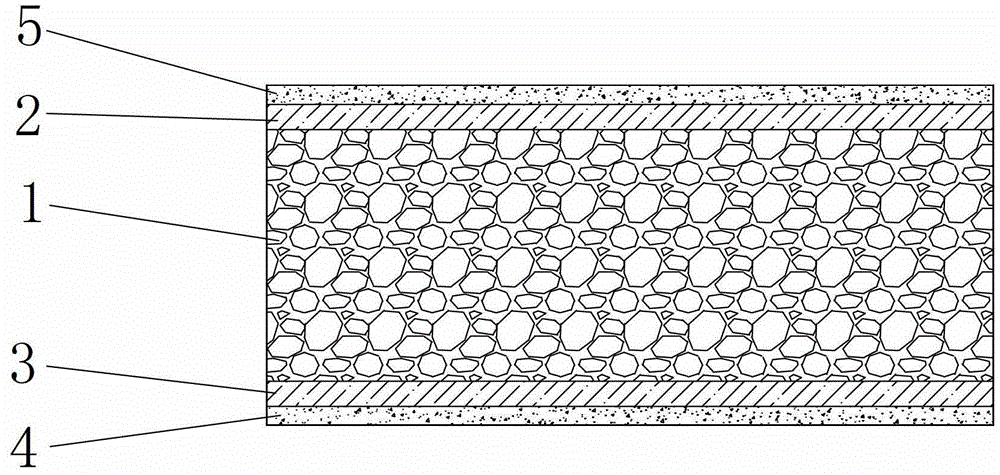Heat-insulation plate bonded with rock wool daub
A technology of thermal insulation board and rock wool, which is used in thermal insulation, roof insulation materials, building components and other directions, can solve the problems of cracking of the outer surface layer, insufficient construction strength, short service life, etc., so as to reduce the project cost and reduce the The effect of construction cost and long service life
- Summary
- Abstract
- Description
- Claims
- Application Information
AI Technical Summary
Problems solved by technology
Method used
Image
Examples
Embodiment Construction
[0024] Such as figure 1 As shown, the thermal insulation board bonded with rock wool cement of the present invention, the thermal insulation board comprises a sprayed rock wool layer 1, a glass fiber layer I2 arranged on the upper surface of the sprayed rock wool layer 1, a glass fiber layer I2 arranged on the sprayed rock wool layer The glass fiber layer II3 on the lower surface of layer 1, the cement layer I5 arranged on the upper surface of the glass fiber layer I2, and the cement layer II4 arranged on the lower surface of the glass fiber layer II3. The glue-sprayed rock wool layer 1 is a rock wool board formed by pressing cotton wool-like rock wool after spraying glue. The inside of the molded glue-sprayed rock wool layer 1 is honeycomb-shaped, so that there are gaps inside the glue-sprayed rock wool layer. This structure makes the glue-sprayed rock wool layer have a certain strength and rigidity. The thickness of the glue-sprayed rock wool layer is 30-200 mm , the spec...
PUM
| Property | Measurement | Unit |
|---|---|---|
| thickness | aaaaa | aaaaa |
| thickness | aaaaa | aaaaa |
| thickness | aaaaa | aaaaa |
Abstract
Description
Claims
Application Information
 Login to View More
Login to View More - R&D
- Intellectual Property
- Life Sciences
- Materials
- Tech Scout
- Unparalleled Data Quality
- Higher Quality Content
- 60% Fewer Hallucinations
Browse by: Latest US Patents, China's latest patents, Technical Efficacy Thesaurus, Application Domain, Technology Topic, Popular Technical Reports.
© 2025 PatSnap. All rights reserved.Legal|Privacy policy|Modern Slavery Act Transparency Statement|Sitemap|About US| Contact US: help@patsnap.com



